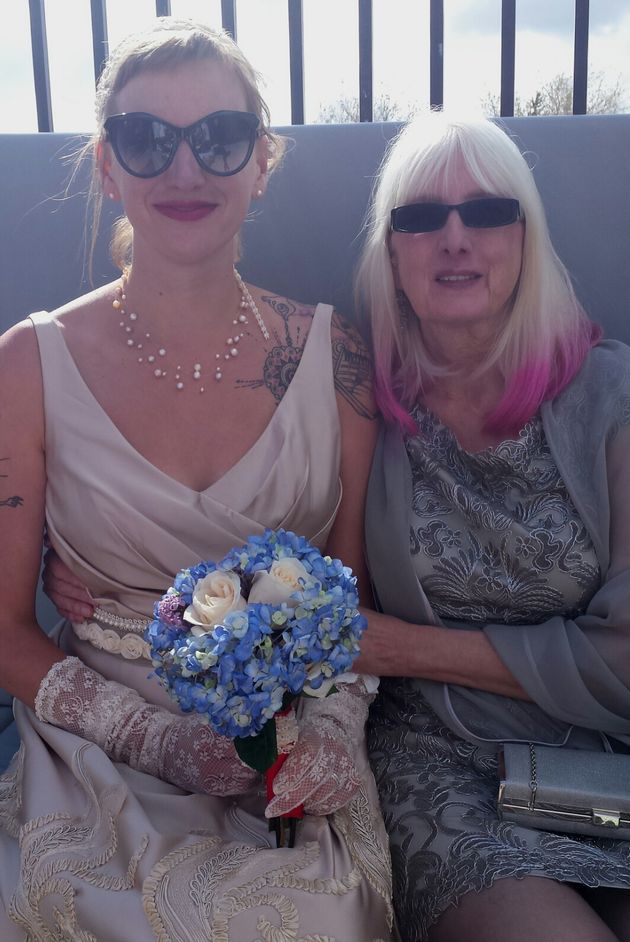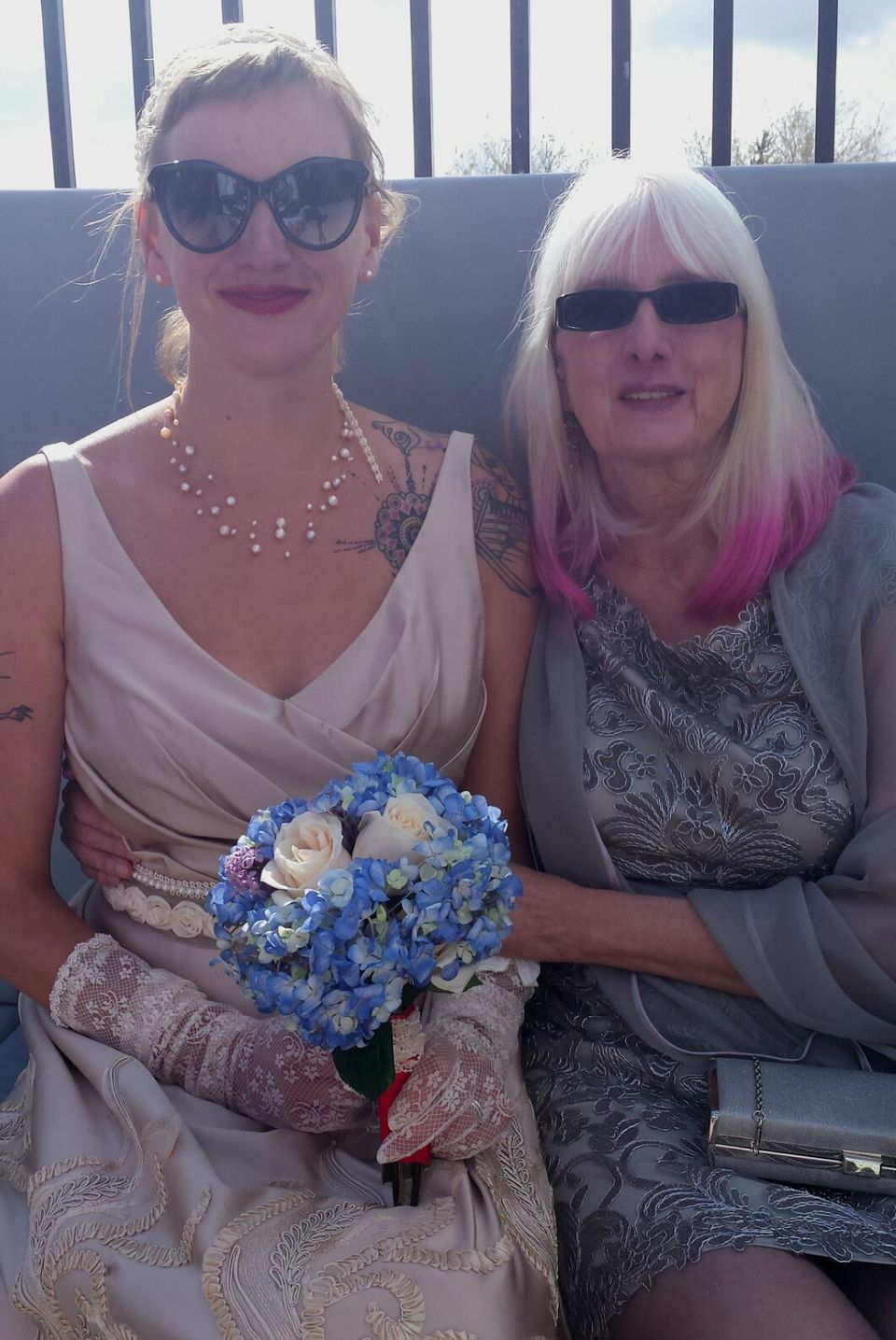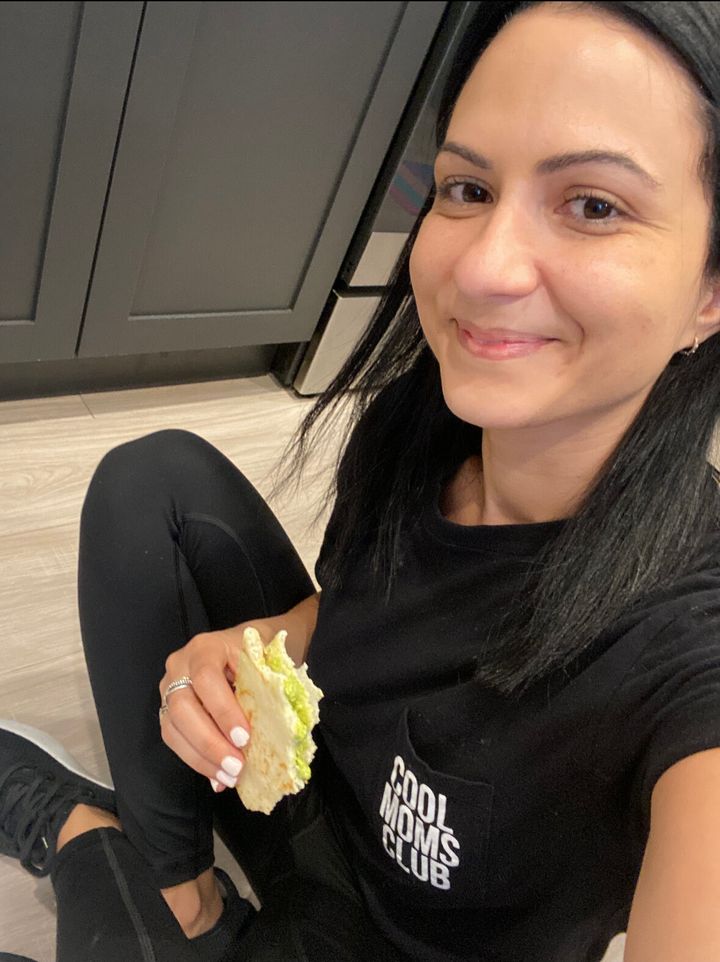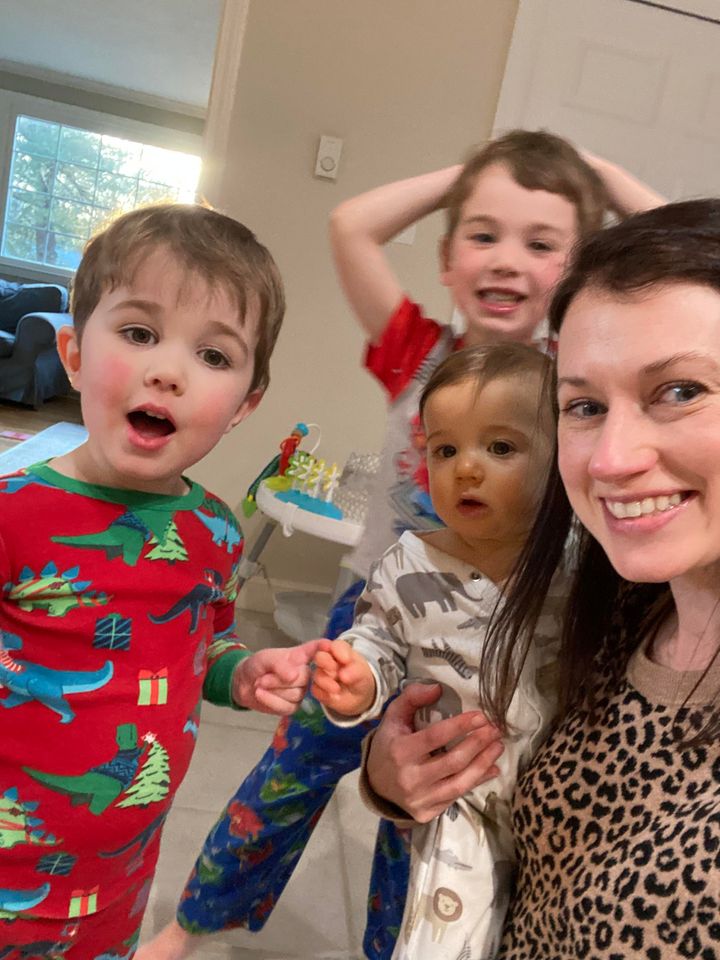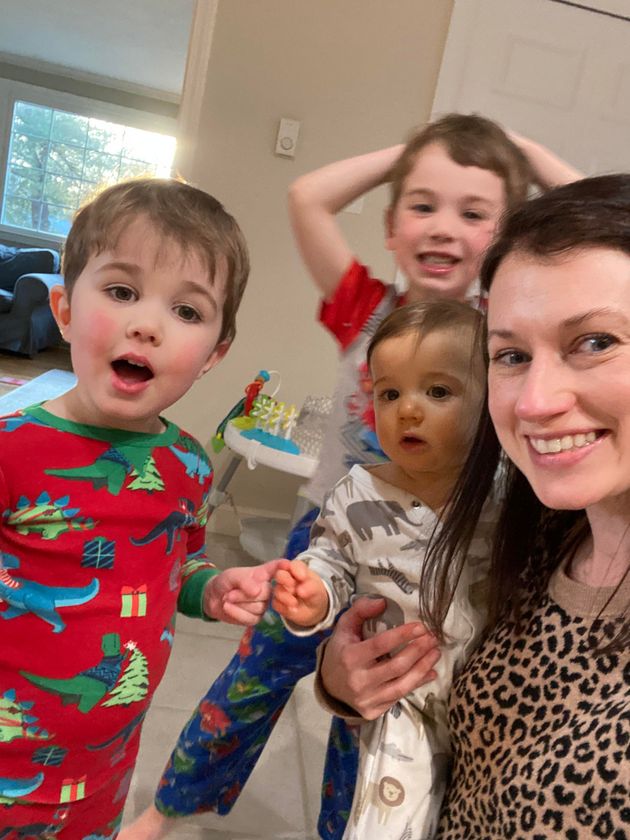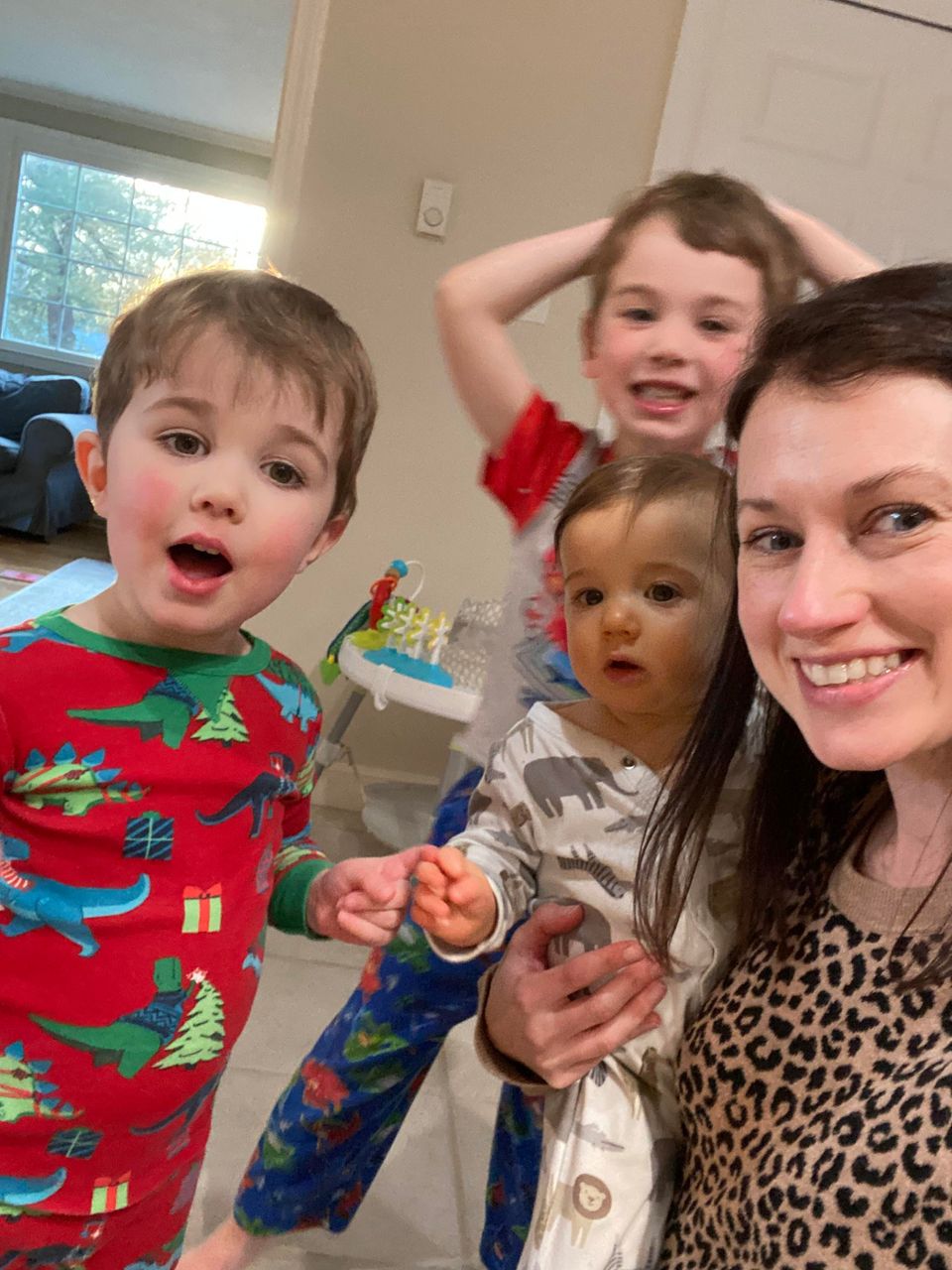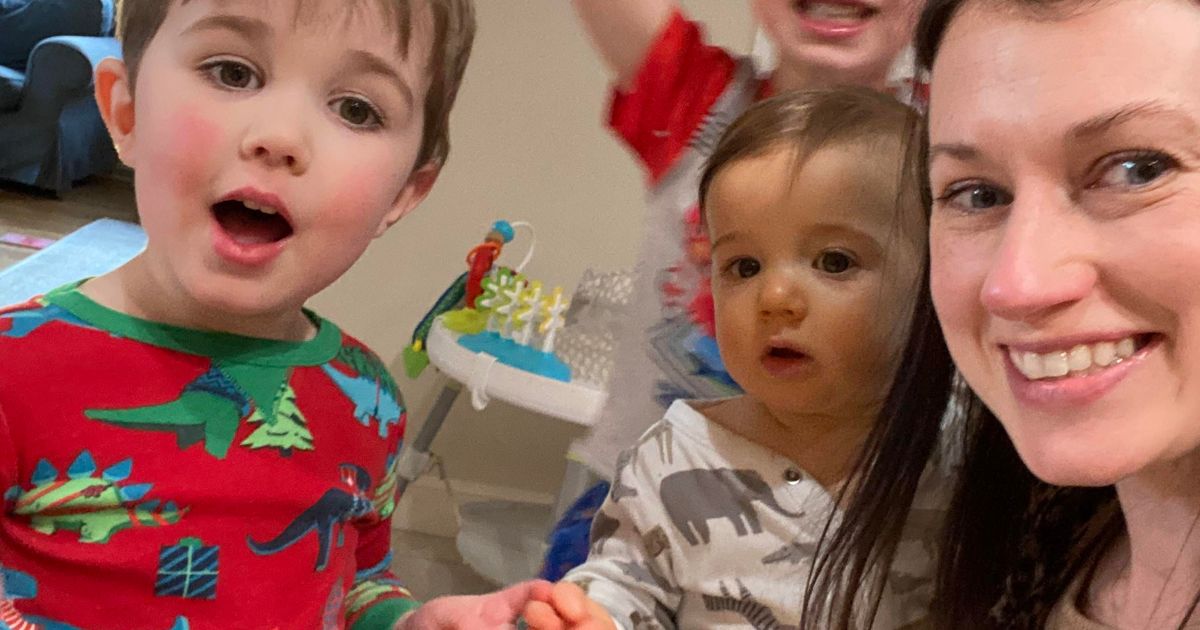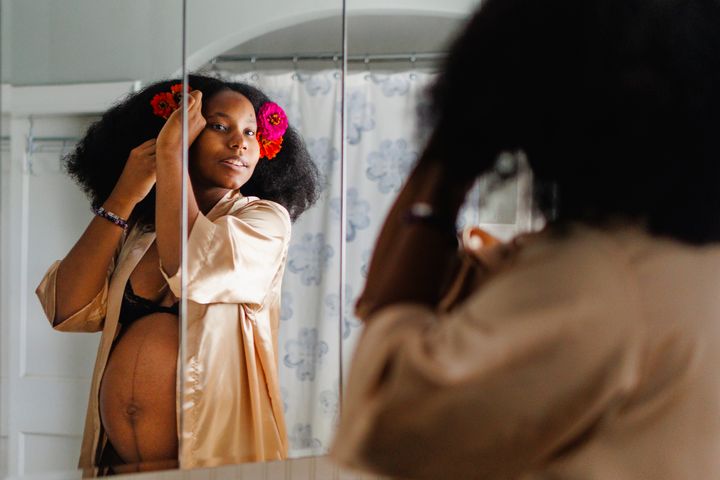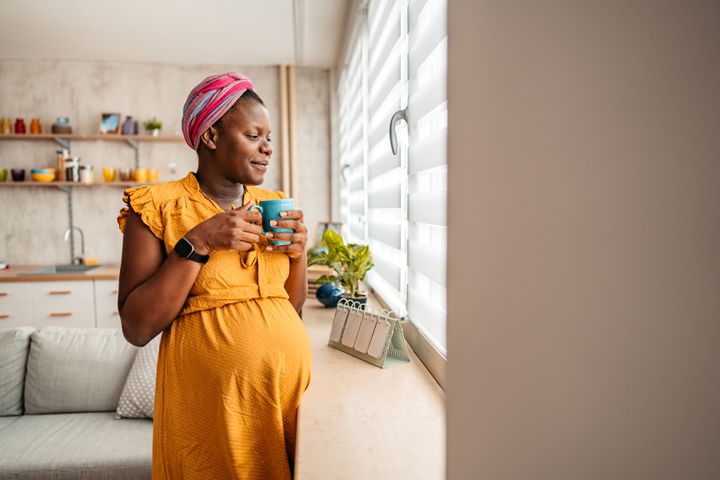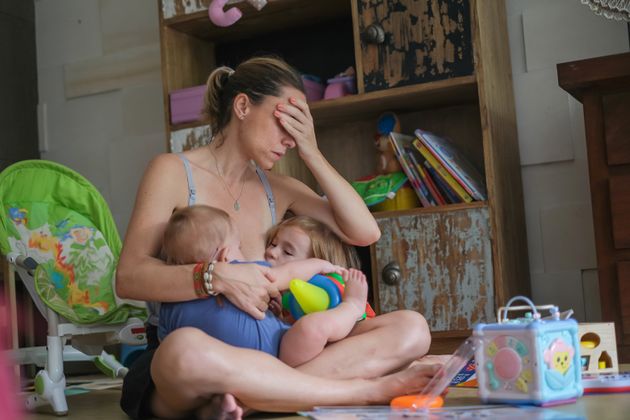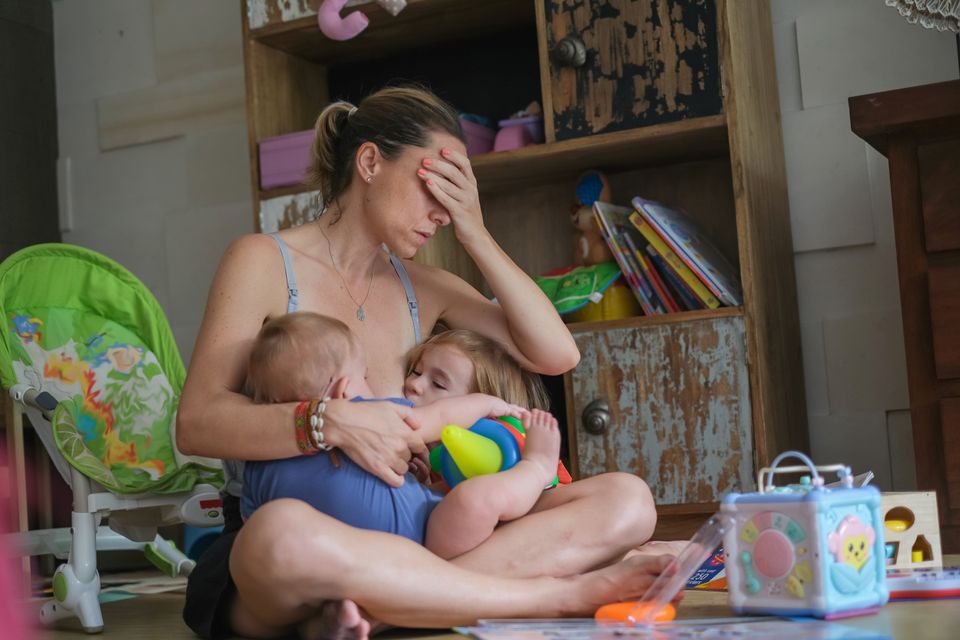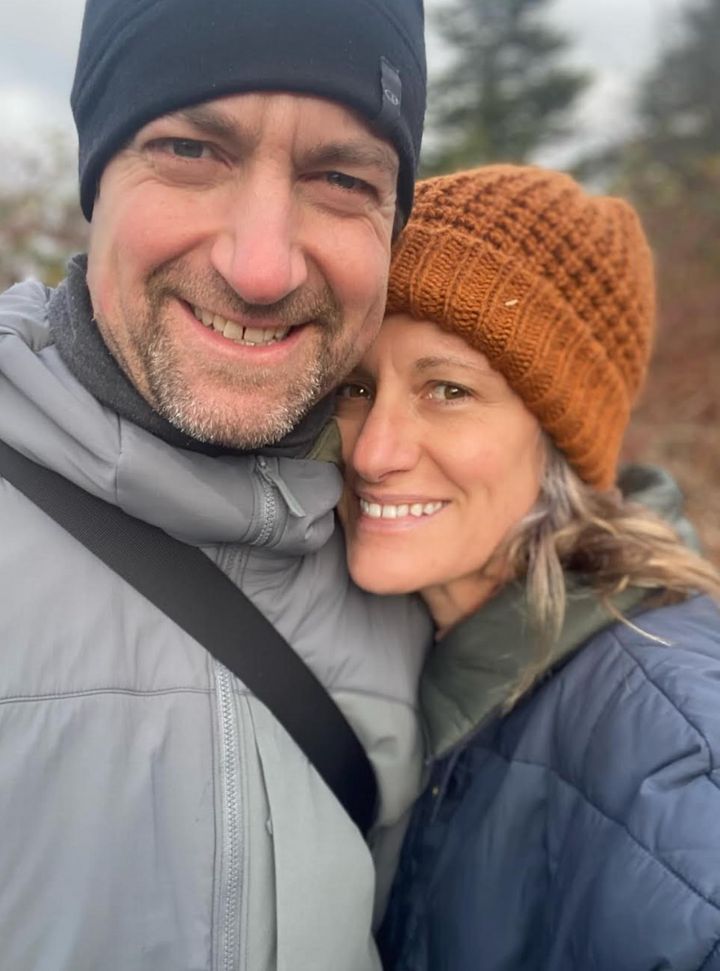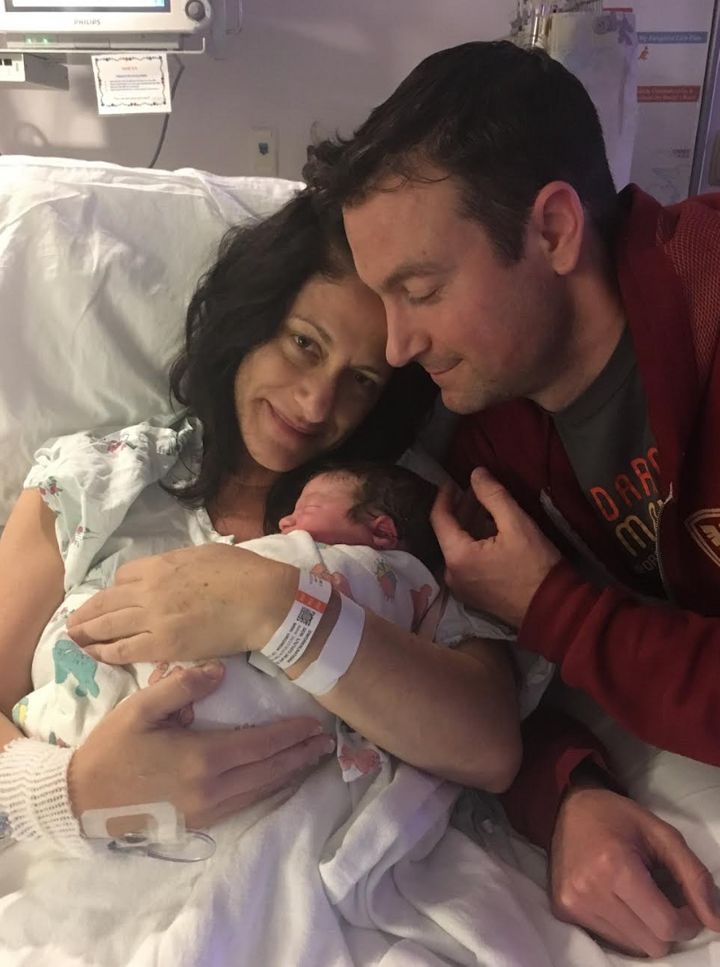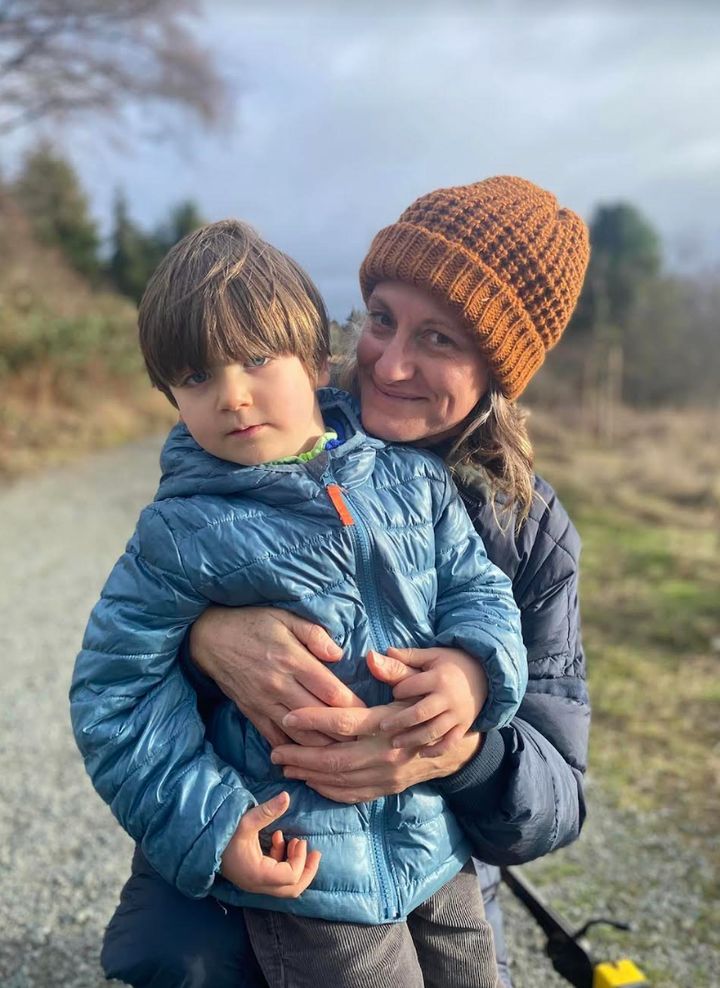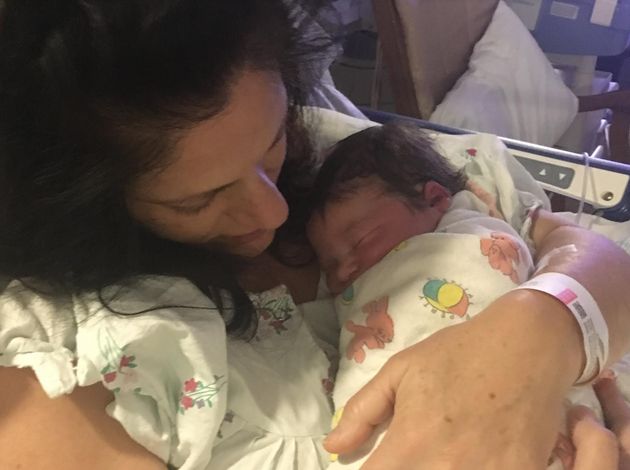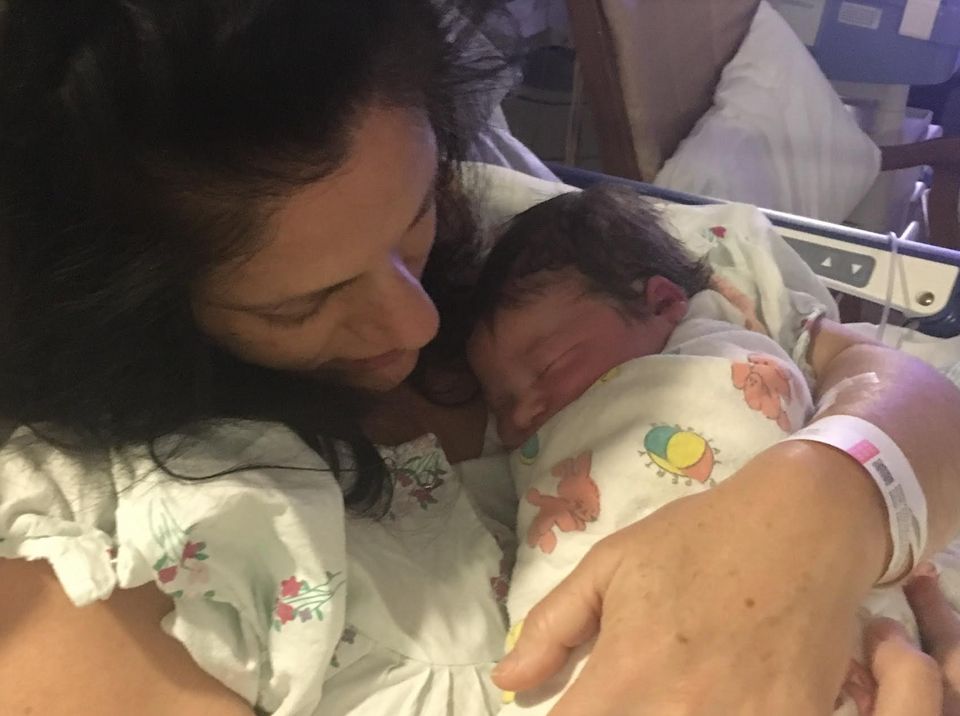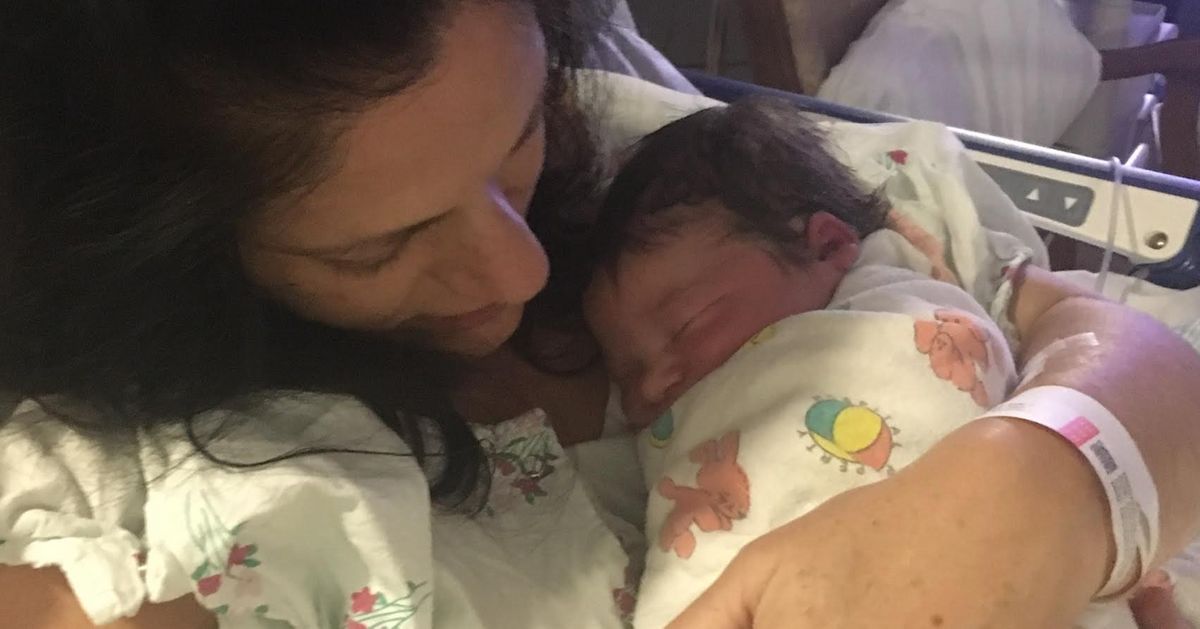I love my little nephew. He has a kid-sized broom that he uses to dance around in his diapers to Freddie Mercury songs as if it’s his microphone.
And I love my little niece, to whom “uppy” means both “pick me up” and “put me down,” and to whom “no” is a magical word for exercising newfound willpower.
Advertisement
I’m always happy to see them, and I have a great time learning from and with them about the world. But when they go home, and the house is so nice and quiet, I breathe a deep sigh of thanks: I get to give them back!
Then I can decide with my husband, Tim, to suddenly go out for dinner (without a diaper bag or babysitter), to go camping, or to visit a casino. We can go see some raucous band and stay out till 1am, or we can fall asleep on the couch watching TV and drinking wine, and wake up whenever we want.
I’m in the phase of life when so many people I know ache to become parents, but meanwhile, I love being child-free. This is, believe it or not, all thanks to my own mum, who also loved her child-free life before she had kids, and made sure to let me know that was OK.
My mum is a badass. She was a nerd growing up, just like me. And just like me, she wanted to travel and go to college, but she had very few financial resources.
Advertisement
So, one day, she joined the army as an interpreter. She went to a language institute and passed a Russian-language program that only a tiny portion of her incoming class passed, and then flew to Germany to work on a mountaintop compound. She was one of three women in a company of 300 men listening to German and Russian soldiers on the radio, translating it all into English for Army intelligence.
That’s where she met my dad. They got married and travelled, came back stateside, and went to college. Roughly eight years later, they had me.
It’s no wonder, then, that when my mum asked me what I wanted from my life as I was having a teenage existential meltdown, I said: “I just want to have an extraordinary life.”
I wanted to travel, take risks, get into trouble, have adventures, go to college and, eventually, make what I hoped would be a positive difference in the world.
I was inspired by my mum’s own life. And at that time in my world, like her, I felt limited only by money, as I had all the other great propulsive forces of youth, like energy, recklessness and idealism. Plus, after my parents’ divorce, my mum, my brother and I lived in my grandmother’s attic, and space was a little tight.
Advertisement
I wanted to explode outward into newness. So when I did move out of the house with my first boyfriend, at about age 20, and my period was late one month, that potential pregnancy felt to me like a very bad thing – not a boon.
I hadn’t travelled.
I hadn’t gone to college, or had any adventures.
I hadn’t taken any big risks.
I sure hadn’t made a difference in the world.
Nick was a nice boyfriend, and he told me he’d get on board with whatever path I wanted to choose: get married and have the baby, have the baby and not get married, put the baby up for adoption, or get an abortion.
I thought about it for a few days and tried on all of these options in my mind. But after much mulling, the only way that felt right was to go on with my original plan of having a wild and free life. I didn’t want a baby. I didn’t want to be pregnant.
I felt like I was about to get stuck in my hometown for the next few decades, changing diapers and picking out public schools.
I decided I would get an abortion on the same day my period came back of its own volition, and I heaved a mental sigh of relief.
Advertisement
However, I was very aware that I had dodged a big baby-sized bullet, despite all of my birth control efforts from the age of 15 onward. And I decided, if I was not to become a mum, that I wanted to be able to have sex like a man, with fewer consequences in the reproductive department.
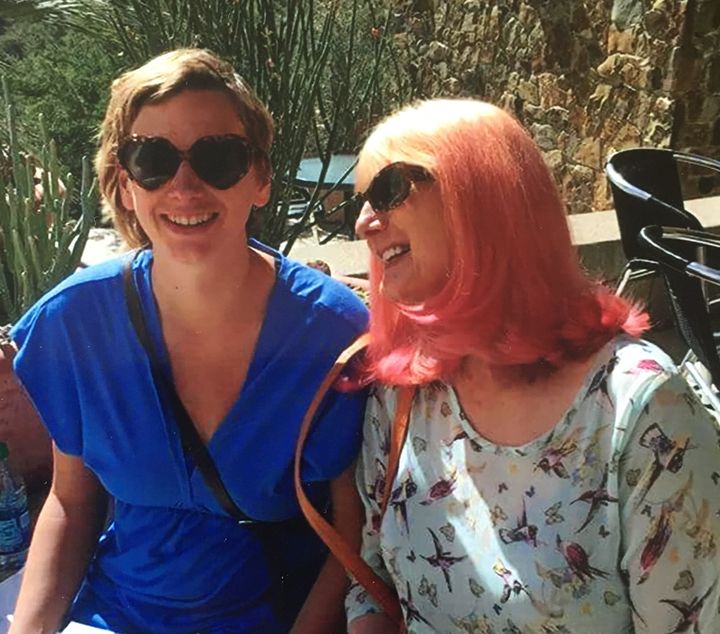
Courtesy of Lydia Paar
I was able to admit to myself for the first time that I knew I did not ever want to have kids – at least not in any traditional biological sense. If I ever changed my mind about mothering, well, there are millions of kids in the world needing homes.
So, I went and talked to the only person I felt might really understand my need to not mother: my mother.
My mum did something very important for me as I was growing up: she’d told me about some of her experiences in the sex realm, helped me to understand what I was feeling when these experiences started to arise for me, and answered all my questions about how this weird and impactful part of life worked.
Advertisement
Because of this open channel of communication, I knew that my grandmother had flown my mum to Japan in the ’60s for an abortion when she was 18, after American doctors they’d consulted said she “didn’t look sad enough” for a procedure here.
And just as I’d hoped she would, my mum helped me. She offered to take me to get an intrauterine device. I said I’d prefer to just have my tubes tied and be done with it, having already heard my fair share of IUD health horror stories (including hers).
And instead of telling me to “just wait and see” or that I would “probably change my mind” like so many other people have, she called around and got me into an abortion clinic, where I sat down with a counsellor and earnestly explained my desire never to have children. Within a week or two, I had an outpatient tubal ligation procedure.
Looking back now, I realise it must have taken my mum a lot of searching to find a doctor willing to perform this on such a young woman with no previous children; most doctors wouldn’t have, whether out of fear of being sued if I did “change my mind,” or because so many people still believe that all women inherently want or ought to have children.
I also know now, having had my own health care plans and understanding what “elective surgery” means, that when my mum said she had “wrangled things out with our health plan,” she meant she had in fact quietly paid for this surgery for me out of pocket.
Advertisement
So here I am, child-free at 40 and at the doorstep of menopause, remembering, with gratitude, this generous gift. I also remember those other voices:
“You might change your mind.”
“You’re just not ready yet.”
“Your biological clock will kick in someday.”
These are sentiments that have floated around me for years, before and after my tubal, not only from the popular media but from people I’ve loved and trusted. And these are mythologies that surround every woman on the planet, every day: the idea that we are born and built to breed.
“Womanhood is not synonymous with motherhood. For many of us, our truest selves are the selves without progeny.”
We are, as an American culture at least, very much in midprocess of correcting this idea. Womanhood is not synonymous with motherhood. For many of us, our truest selves are the selves without progeny.
And when people, often women, ask me how I feel about things now, I tell them wholeheartedly that I’ve never regretted my decision to amend my reproductive capacities – not once. (I’ve even recommended the procedure to interested parties.) But it’s also important to acknowledge that if I did have regret, it would have been my own choice to regret – not anyone else’s. And that kind of regret, born of agency, is still good; it would have been mine to own.
Advertisement
Needless to say, it’s since become important to me that other women know this “child-free by choice” option is viable from early on in our lives.
I would have been a bad mum at 20: resentful and risky and selfish. I’d still be a mostly bad mum – a little more risk-averse, but covetous of my time alone, my mobility, and my ability to have sex anytime I want without period planning, birth control side effects, and potentially life-changing consequences. I’ve gotten to move over 25 times in the past two decades, meet a ton of people, see and do crazy things, and go to college – a lot.
I’ve been able to reallocate my energy to get really good at other things besides mothering. Not that I buy into the “either-or” myth of motherhood; there are many amazing women who can manage an impressive amount of autonomy, professionalism and wildness while still doing right by their children. It’s just that I knew I couldn’t – and I didn’t want to anyway.
And it’s because people listened to me – my mum and the counsellors and doctors at Oregon’s Lovejoy Surgicenter – that I was able to live the life I wanted to live.
So my takeaway here, besides the closely related “vote pro-choice” sentiment, is that when someone, especially a woman, says, “I don’t think parenthood is for me,” we need to honour and respect them in the same way we would an aspiring parent. Both choices are equally natural, equally potent and equally rich with possibility.
Advertisement
Doctors, support women in permanent birth control when they ask for it. Friends and family, believe what women tell you about their bodies.
Then there remains just this little bonus takeaway: We should remember to enjoy, and to spoil, our nieces and nephews, at least a bit, before we give them back to their parents, who chose the hard work that parenthood entails.
Lydia Paar is an essayist and fiction writer. Her essay “Erasure” was of notable mention in the 2022 “Best American Essays” collection, and was the 2020 winner of North American Review’s Terry Tempest Williams Creative Nonfiction Prize. The New England Review nominated her as a finalist for its 2021 Award for Emerging Writers, and her works have been showcased in outlets such as Literary Hub, The Missouri Review, Essay Daily, Witness, Hayden’s Ferry Review and others. The recipient of an MFA from Washington University in St. Louis and a master’s from Northern Arizona University, Paar is also a former recipient of a Frederick & Frances Sommer Fellowship and of a Millay Arts residency. She currently co-edits for the NOMADartx Review and teaches writing at the University of Arizona. Her first full-length essay collection, “The Entrance Is the Exit: Essays on Escape,” is forthcoming from the University of Georgia Press. She can be reached there or at www.lydiapaar.com.
Do you have a compelling personal story you’d like to see published on HuffPost? Find out what we’re looking for here and send us a pitch.
Advertisement

